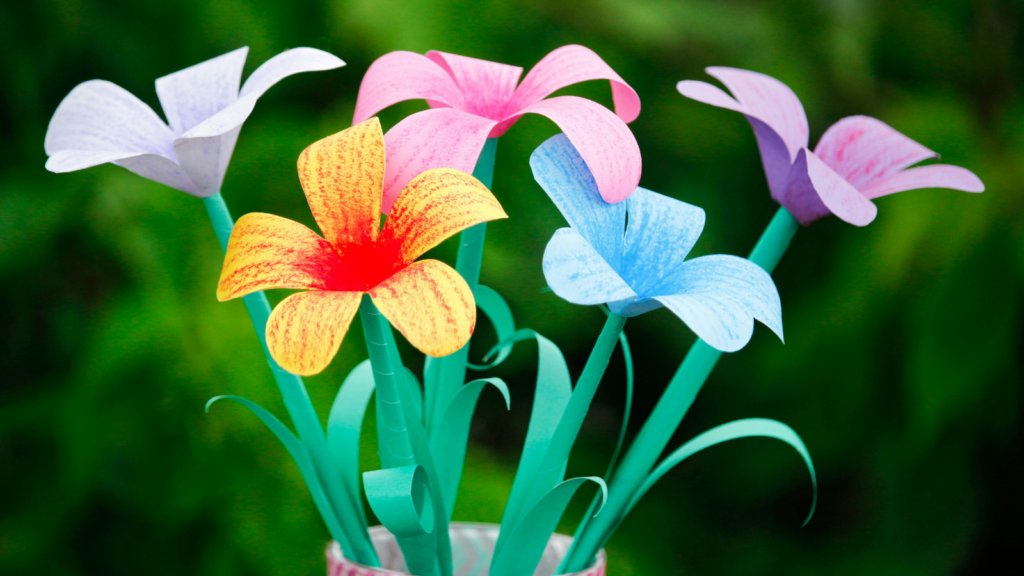As winter’s chill sweeps in, there’s nothing quite as magical as the sight of falling snow. But what if you could bring that magic indoors, transforming your crafts into wintry wonderlands? Welcome to the world of DIY faux snow! This article will guide you on how to make fake snow for crafts, adding a frosty touch to your indoor decor.
How to Make Fake Snow for Crafts
Creating fake snow for crafts involves simple ingredients, a quick procedure, and extreme fun. One popular method includes the use of baking soda and white hair conditioner. Stirring three cups of baking soda with half a cup of conditioner yields a snowy mixture. It’s perfect for adding a crafty winter touch. This imitation snow exhibits cold touch, isn’t overly wet, and even crunches when compressed, mimicking natural snow effects. However, it does not melt, making it perfect for indoor use. With the right precaution, it’s safe for kids and offers an engaging learning activity.
Materials Needed for DIY Fake Snow
 Creating DIY fake snow for crafts involves gathering a few essential items. Here’s a concise list, excluding unnecessary extras:
Creating DIY fake snow for crafts involves gathering a few essential items. Here’s a concise list, excluding unnecessary extras:
- Baking Soda: A common household item, used for its powdery texture and white color, mimicking the appearance of snow.
- White Hair Conditioner: Offers a moist consistency to the mix, giving the fake snow its tactile feel.
- Mixing Bowl: A large container to mix the ingredients and create the snow mix.
- Spoon or Spatula: Used to stir the mixture until it forms a snowy texture.
- Measuring Cup: To measure the ingredients accurately, this regulates the consistency of the purported snow.
Step-by-Step Guide to Making Fake Snow
 Following a simple, quick process, anyone can make fake snow for crafts. First, measure about three cups of baking soda into the mixing bowl. Adding the white hair conditioner comes next, with half a cup being the ideal amount. Use the spoon or spatula to thoroughly blend the two ingredients, crafting them into snow that’s cold to the touch and perfect for craft creation.
Following a simple, quick process, anyone can make fake snow for crafts. First, measure about three cups of baking soda into the mixing bowl. Adding the white hair conditioner comes next, with half a cup being the ideal amount. Use the spoon or spatula to thoroughly blend the two ingredients, crafting them into snow that’s cold to the touch and perfect for craft creation.
It’s important to remember, after the mixing process, that the snow’s consistency can be adjusted by adding either baking soda for thickness or conditioner for a softer, more powdery texture.
Throughout the process, safety stands as the top priority; thus, the materials used are non-toxic and child-friendly. Thus, baking soda and white hair conditioner not only form the best DIY fake snow but also ensure a fun, safe crafting experience.
Creative Uses for Fake Snow in Crafts
There are diverse ways to creatively use fake snow in crafts. For instance, a snow-simulated diorama can bring a winter wonderland indoors. This involves arranging miniature landscapes or cityscapes, and accenting them with the faux snow, highlighting the wintry effect.
 Another exciting use is in creating holiday decors. Christmas ornaments, such as snow-globe mason jars, can be adorned with this artificial snow. It’s ideal for providing a wintry backdrop to the tiny scene enclosed in the jar.
Another exciting use is in creating holiday decors. Christmas ornaments, such as snow-globe mason jars, can be adorned with this artificial snow. It’s ideal for providing a wintry backdrop to the tiny scene enclosed in the jar.
But that’s not all. Crafting enthusiasts recognize this DIY snow’s value in making themed birthday decorations. Imaginative party designers sprinkle the fluffy stuff on signage, faux winter trees, or table centerpieces for that special touch.
Tips for Preserving Your Fake Snow
Lasting enjoyment comes from preserved faux snow in various crafting endeavors. It’s crucial to follow tips for prolonging the lifespan of the DIY snow. Storing fake snow in an airtight container, for example, prevents drying out. Keeping it out of direct sunlight stops discoloration, ensuring it retains its snowy white hue. A cool, dry area like a basement or a closet proves ideal for storage, mitigating heat and moisture damage. Refreshing with a minor addition of white conditioner, after retrieval, aids in maintaining an adjustable texture for continued craftwork.
All You Must Know on Making Fake Snow
It’s clear that how to make fake snow for crafts is not only easy but also safe and customizable. The versatility of this homemade snow opens up endless possibilities for creating winter-themed crafts like dioramas, holiday decorations, and even art projects. It’s also sustainable, as the snow can be preserved and reused for future projects with the right care.
